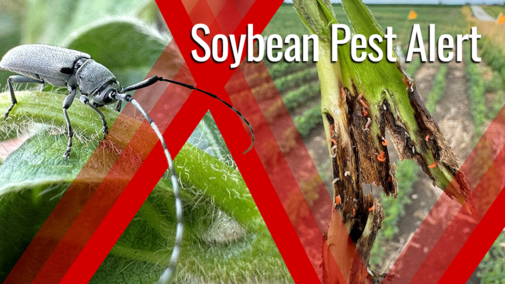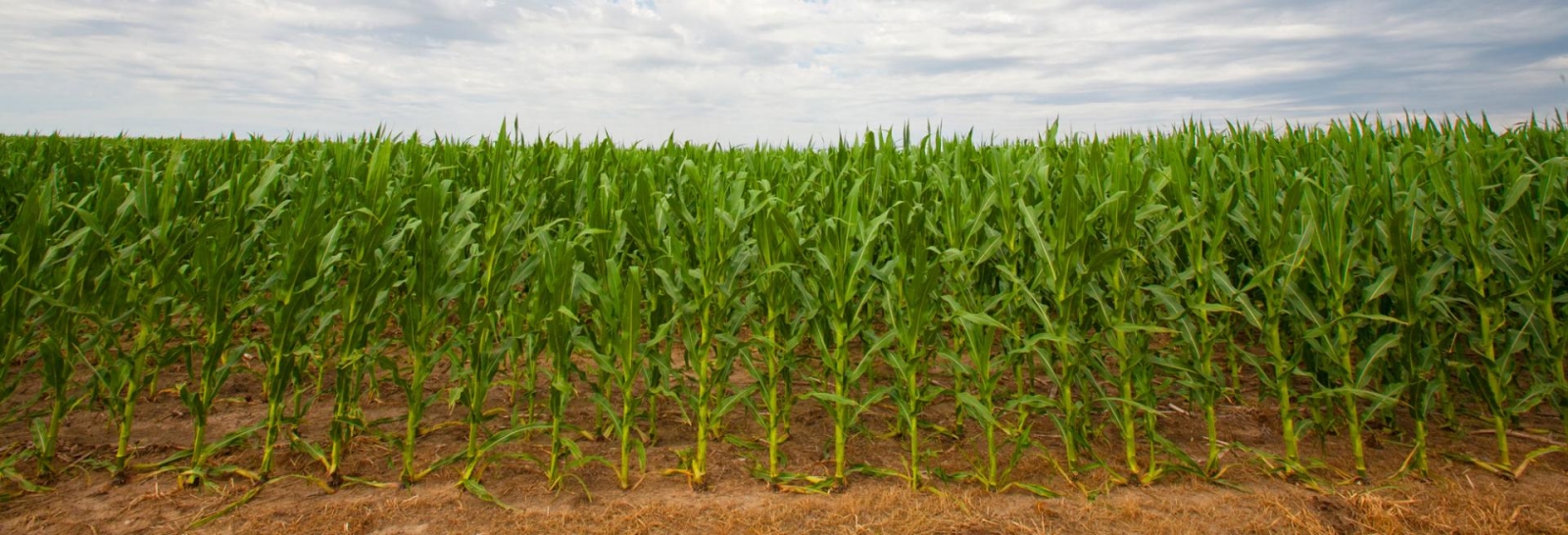Soybean gall midge, Dectes stem borer and plant diseases are key threats to soybean production in Nebraska. In early July, we provided an update across nine sites in the state regarding soybean gall midge larval abundance, Dectes stem borer adult activity, and plant diseases. For more details on this project and June observations, see the July 2 article “Insect Pests and Plant Diseases in Soybean: A Nebraska Soybean Board-Funded Project”.
In this article, we provided an update on data and observations of these pests collected at nine sites in Nebraska from July 14-23.
Highlights
- Soybean gall midge larvae and wilting/dead plants were most abundant in the east-central and southeastern part of the state.
- Dectes stem borer adult egg-laying activity was observed at all sites, with larval presence at all sites except Dixon County.
- Phytophthora was the most common disease, with occurrence at three of the nine sites.
- Co-occurrences of these pests within the same plant occurred at some sites, but only when both of the pests were abundant or disease incidence was high.
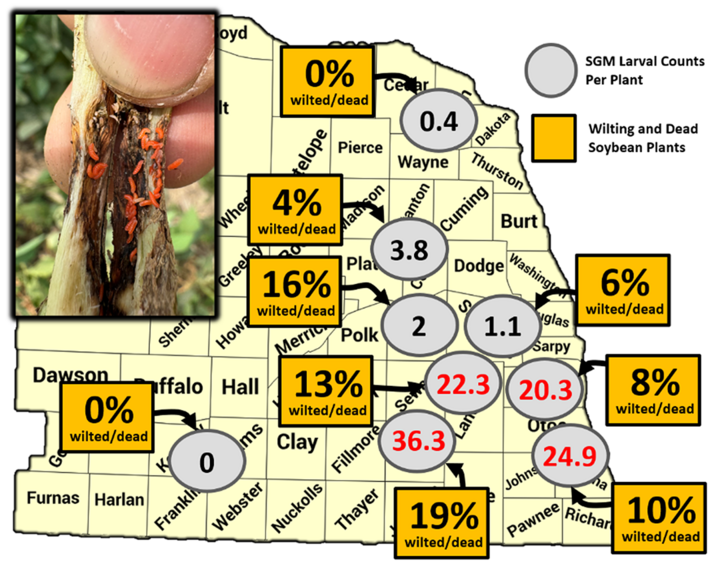
Soybean Gall Midge
- Larvae were detected at all sites except Adams County (Figure 1).
- Southeast Nebraska had the greatest number of larvae.
- Wilting and dead plants were observed at seven of the nine locations (Figure 1).
- Wilting and dead plants were generally aligned with larval counts from the current or previous collection in June.
- Larval counts typically peak for the season in late July and early August.
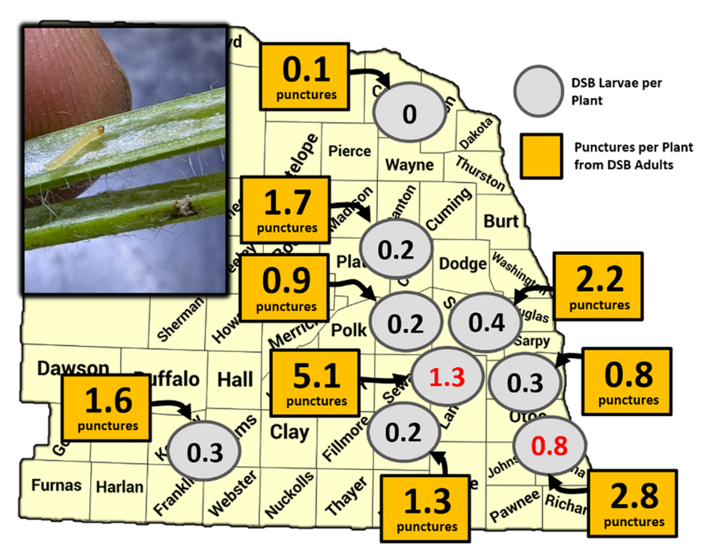
Dectes Stem Borer
- After mating, females create small grooves — called punctures — in soybean plants on the petioles and main stem to lay their eggs.
- Not all punctures result in eggs being deposited in the plant, but it provides an estimation of adult activity.
- All nine sites had some amount of adult activity based on the number of punctures (Figure 2), with the greatest number occurring in southeastern Nebraska.
- Larvae per plant were averaged at less than one per plant (Figure 2), which is expected since they are cannibalistic.
- Most of these larvae were found in the petiole, with some of them starting to enter the main stem of the plant.
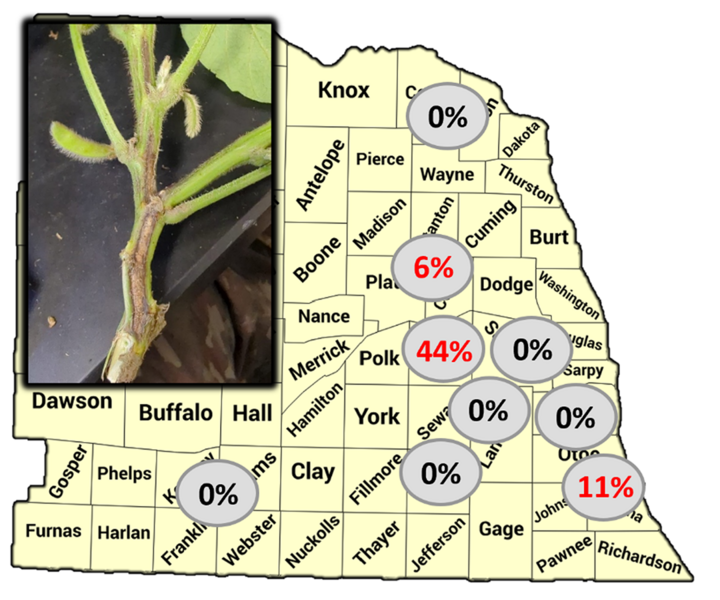
Plant Diseases
- Several different plant diseases can occur on soybeans; however, Phytophthora (Figure 3) and downy mildew are the only diseases that have been documented so far.
- Of the two diseases, Phytophthora is the most common, occurring at three of the nine sites at an incidence of up to 44% of plants.
- In nearby fields, other diseases such as frogeye leafspot and white mold have been found.
Co-Occurrence of Pests
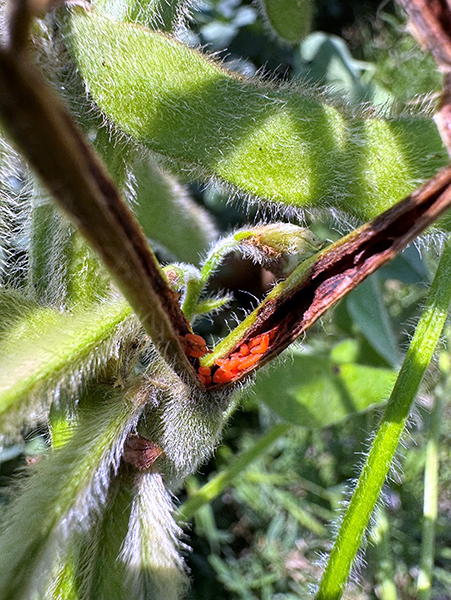
- In some cases, soybean gall midge and Phytophthora occurred on the same stem, with fewer soybean gall midge observed compared to plants not infected with Phytophthora at the same site.
- Soybean gall midge larvae were found in petioles with Dectes stem borer punctures at the Saline, Lancaster and Otoe County sites, where both pests were present in high numbers.
Stay tuned for another report in early September on the data collection and observations from the August collections. For more information on soybean gall midge, visit the Soybean Gall Midge Alert Network site.
